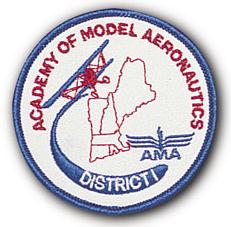109. “Let's not ground drones because of a few close calls”
This past month the Air Line Pilots Association, the National Air Traffic Controllers Association, and Airlines for America issued a letter to Congress calling for tighter regulation on drones. Responding to a video captured by a drone illegally flying within feet of a jet landing at McCarran International Airport in Las Vegas, the letter calls on Congress to get aggressive with hobby and recreational drone use. “The likelihood that a drone will collide with an airline aircraft,” the letter concludes, “is increasing.”
The letter — echoing many of the news headlines surrounding the video — makes a common error: Observing one collision and a handful of “close calls” does not mean the probability of or the dangers presented by drone collisions have changed. Indeed, the best estimates show that the risk is extremely low, and the one confirmed collision that caused no injuries is consistent with an acceptable risk level.
This may sound like technical nitpicking, but it has significant implications for the future of drone re gulation. The signers of the letter call for the implementation of an onerous drone registry and mandates for all drones to be equipped with tracking technology, but they fail to demonstrate that drones pose a significant risk that requires new regulations, rather than better enforcement of some current ones.
Understanding the need for regulation requires some knowledge of the risk drones pose. A 2016 analysis by our former Mercatus colleagues Eli Dourado and Sam Hammond approximated that risk by looking at incidents of birds striking airplanes in the national airspace, as well as the resulting damage, injuries, or fatalities. They estimate that a drone collision inflicting significant damage to an aircraft would occur once every 1.87 million years of drone flight time. Meanwhile, one drone collision that causes serious injury or fatality would occur every 187 million years of drone operation.
A recent Federal Aviation Administration (FAA) study found that computer simulated drone strikes do, in fact, inflict more damage to an aircraft than bird strikes. Yet even if every drone strike resulted in fatalities, Dourado and Hammond found that the fatality rate would still remain below the risk level identified by the FAA’s 2015 drone registry task force as acceptable.
Defining an “acceptable” fatality rate sounds callous, but careful cost-benefit analysis is a wise guide of public policy. It's easy to point to hypothetical worst-case scenarios — they have real emotional impact no matter how improbable they are. However, despite years of reports on drone sightings, only one drone collision has ever been confirmed, and that collision did not cause any injuries. Nor have we seen signs that drone pilots have engaged in malicious activity, despite a warning from the FBI last year that terrorists would perpetuate domestic attacks with drones “imminently.”
Moreover, focusing only on the worst possible cases misses the potential for drones to actually save lives: They have been used to deliver essential healthcare in Africa, for disaster recovery efforts after Hurricane Harvey, and for humanitarian aid around the world.
The White House and Department of Transportation made note of these and other benefits when announcing the Drone Integration Pilot Program late last year. Its priority has correctly been placed on identifying the rules that currently restrict drone use in the United States that can be lifted without having considerable effects on safety.
In fact, the current state of affairs is far from a free-for-all: The FAA has active rules and guidance requiring drones to be operated in daylight, less than 400 feet above ground level, and in the operator’s line-of-sight. Further, drones are subject to the same airspace restrictions that all other aircraft are subject to, and drone pilots are forbidden from flying overhead of other people or within five miles of airports without the express approval of the airport and, if applicable, air traffic control.
Some of these rules, such as avoiding flight near airports and in restricted airspace, make the airspace safer. However, the FAA’s enforcement of these rules has been ineffective due to a lack of coordination with local law enforcement and inconsistent punishments for violators. Others, like the line-of-sight rule and the ban on flights over other people, will prevent the potential benefits of drones from being fully realized.
Before adding more regulations, policymakers and regulators must keep at the front of their minds the windfall of benefits that will result from the integration of drones into the American airspace. And they must keep conversations about drone restrictions focused only on credible risks, rather than extraordinary anecdotes that incite fear.
Christopher Koopman is a senior research fellow and Michael Kotrous is a program associate with the Mercatus Center at George Mason University’s Technology Policy Program.


